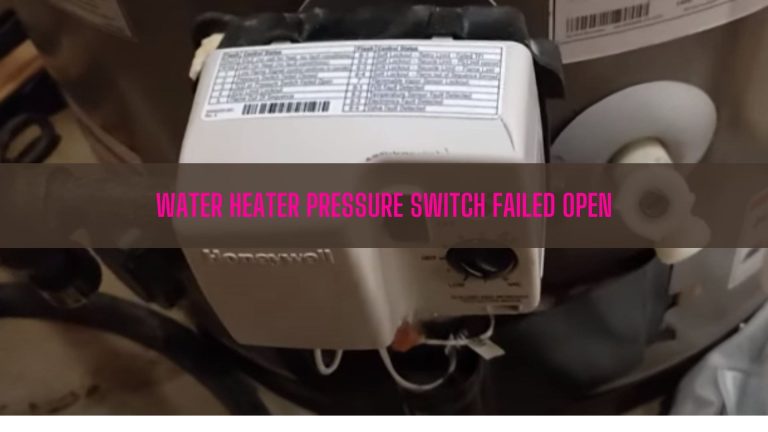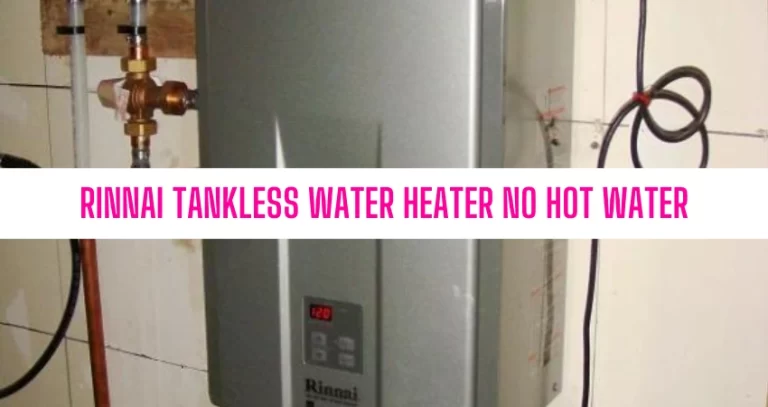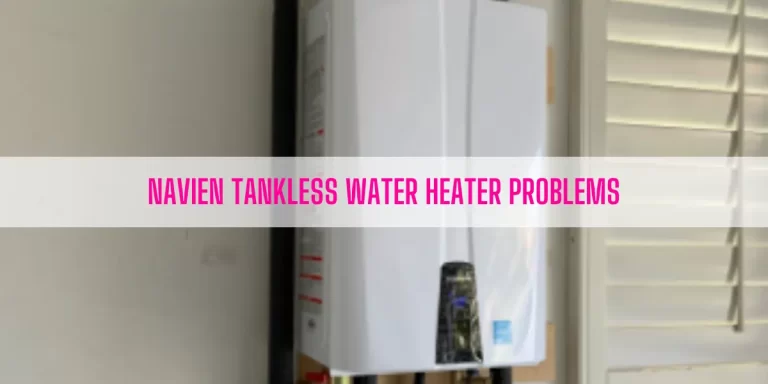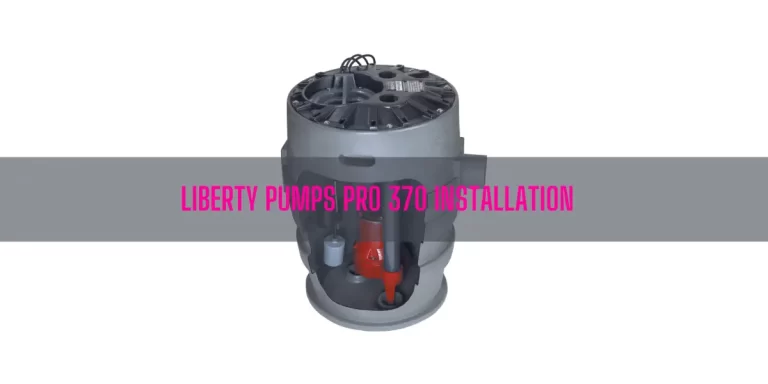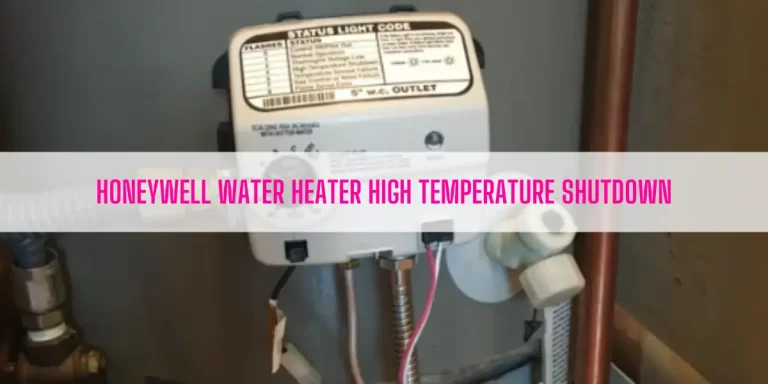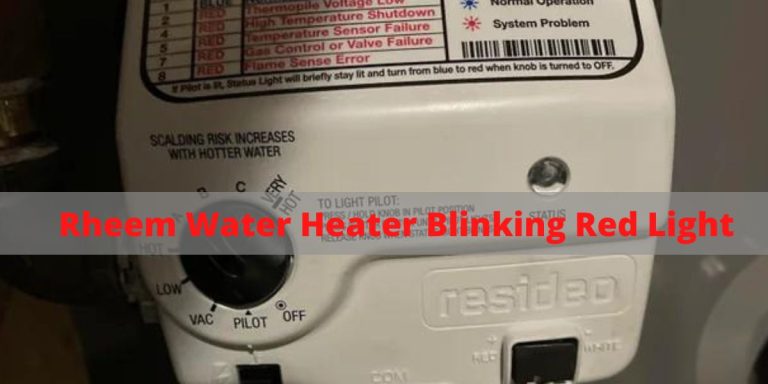Scale or mineral deposit buildup in the heat exchanger is one of the main reasons that prevent your Rinnai Tankless Water Heater from getting hot enough.
Apart from this, your Rinnai water heater will not deliver enough hot water if you set the temperature too low or any error codes displayed on the controller.
If you want to get sufficient hot water out of the unit, you must fix those problems. And this guide will help you resolve those issues. So, keep reading till the end.
Table of Contents
Rinnai Tankless Water Heater Not Getting Hot Enough [5 Easy Solutions]
Throughout this chapter, I will walk you through the troubleshooting steps to fix this water heater issue: Not getting enough hot water.
01. It Takes Time to Heat Up
Don’t you get enough hot water after turning on your water heater? Wait! It’s normal for every tankless water heater. Generally, a tankless unit, whether it’s a gas or electric, takes 10-15 seconds to heat the water as the unit goes through the ignition sequence. [1]
Turns out, if the distance of your bathroom or kitchen is far away from the heater, the water should travel a long way. As a result, the water will lose a lot of heat to the pipe itself on the way.
Nonetheless, some fixture mixing valves also create problems to get hot water.
How To Fix:
The best solution to this issue is to install a recirculation pump. Also, you can install a small water tank next to your Rinnai tankless unit to store some hot water. As a result, you will get hot water right off the bat.
Next, inspect the mixing valves of the fixture. Ensure there are no restrictors that cause the mixing valve to slow down the water flow. If needed, replace the faulty mixing valve with a new one.
02. Set The Temperature Too Low
Setting the temperature too low causes the tankless water heater to deliver lukewarm water output. So, make sure you set the water temperature to the higher setting to get sufficient hot water out of the unit.
How To Fix:
It’s not a problem actually. What you need to do is- just turn up the water temperature. Go along with the following steps to increase water temperature:
- Ensure you turn the unit on. If not, press the On/Off button to turn on your water heater.
- Press the Priority button and it will blink orange, which indicates it’s controlling the temperature and your water heater is ready to supply hot water.
- Now, press the Up button to increase the water temperature to your desired setting.
Note: According to the Rinnai manual, you shouldn’t set the water temperature over 125°F as this can cause severe burns or scalding. [2]
03. Water Runs Through 3/4 inch Metal Pipe
If you install a long run off ¾” metal pipe, it will take a lot of time to get hot water as the water should travel a long way. Turns out, the metal pipe itself takes heat out from the water. As a result, you will not get enough hot water immediately once you turn the unit on. In short, you should wait until the water arrives and heats up the pipe.
How To Fix:
I highly recommend you install ½” pex pipes instead of ¾” metal pipe. They provide heated water quickly as the delay volume is decreased. Besides, this pipe won’t pull the heat out of the water.
04. Error Code Displayed On the Controller
Your Rinnai Tankless Water Heater will not function at all if it throws an error code on the controller display. So, how can you expect to get hot water out of the water heater while it’s not working?
How To Fix:
Take a look at the controller display and see whether the unit pops up any error codes or not. Then, check the manual and find out the meaning of the error message. Finally, follow the corrective action the manual recommends. If needed, hire a certified technician to erase the error code from the controller display.
05. Scale Buildup In The Heat Exchanger
Scale formation in the heat exchanger is one of the main reasons that prevent your water heater from producing hot water.
Over time, the heat exchanger gets clogged by mineral deposits coming with the water. Besides, scale will form in the heat exchanger if you run the unit at higher temperature settings.
How To Fix:
You must flush the water heater once a year to remove sediment build ups from the heat exchanger. However, if you live in a hard water area [3], you should flush the water heater every six months. To learn how to flush heat exchanger, check out this article on Rinnai Tankless Water Heater Maintenance Manual.
FAQs
Why is my tankless water heater only lukewarm?
Your tankless water heater will only deliver lukewarm water if the power sources aka the circuit breaker gets tripped. To solve this issue, just flip the breaker to the on position and let the unit heat water evenly.
How do I make my Rinnai hot water hotter?
The only way you can make your Rinnai hot water hotter is to turn up the temperature setting.
Why is my Rinnai tankless water heater not heating?
Rinnai tankless water heater won’t heat due to the following reasons:
- Gas is turned off at the water heater, meter, and gas tank
- Incorrect gas type and inlet gas pressure
- Air in the gas lines
- Defective igniter
- Damaged flame rod wire
What is the life expectancy of a Rinnai tankless water heater?
The Rinnai tankless water heater will service you for up to 20 years if you take care of it according to the manual.
What temperature should my Rinnai water heater be set at?
You should set the temperature of your Rinnai water heater at 120°F. Never try to set the temperature over 125°F. Otherwise, it will burn your skin severely.
End-Note
Not getting enough hot water is a common tankless water heater issue. Tripped breaker, setting the temperature too low, and clogged heat exchangers are some culprits responsible for this problem.
Fortunately, I broke down every culprit and mentioned some troubleshooting steps to fix this issue. So, follow the guideline and resolve the ‘not getting sufficient hot water’ problem.
You can even take help from a certified plumber if you can’t solve the water heater issue.

Eric Alvarez is the head of content on LilDutchUncle.Com. He is an HVAC guy based in El Paso, Texas, United States. He obtained his Bachelor of Science degree from the University Of Texas at El Paso. Years of experience in the HVAC field have taught him many lessons, not the least of which is that the value of quality and knowledge far exceeds any promised initial savings. He has a good standing reputation for superior skills in heating, air conditioning, hot water tanks, and indoor air quality systems.
